How can the ancient Chinese women's horse -noodle skirt become Dior's iconic outline?
Author:Writer Wen Digao News Agency Time:2022.07.28
Recently, Dior, a well -known French fashion consumer brand, launched a black mid -length skirt with a price of up to 29,000 yuan. Some careful netizens found that at first glance, this skirt looks like a traditional Chinese female costume -horse -noodle skirt.
However, in the product description, Dior actually emphasized that the skirt uses the iconic Dior silhouette, and the words "horse -faced skirt" are not mentioned. As a result, the sound of plagiarism of Dior culture suddenly rose. Dior has no statement so far, but has silently launched this new product in the Chinese market.
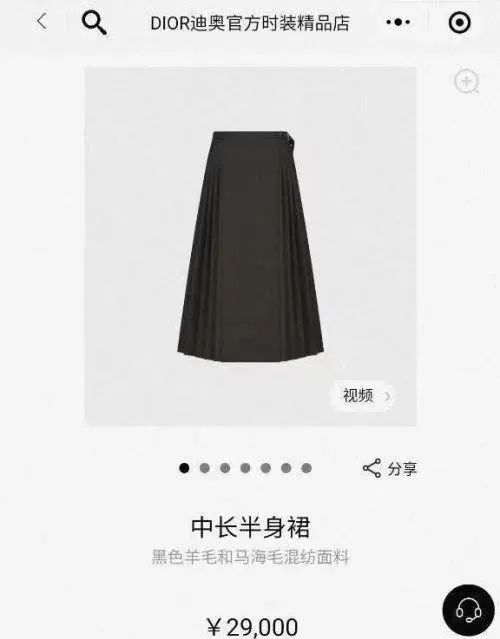
"Mid -Mid -Mid -length Skirt" in Dior's official store. Source/Dior official store screenshot
So what exactly is a horse -faced skirt? Has Dior embezzled horse -up skirts? Today, let's understand the past and present of the traditional Chinese women's skirt.
The bustling women's skirts in the Ming Dynasty
China's horse -noodle skirts were mainly popular in the Ming and Qing dynasties, but as early as the Ming Dynasty, its cultural genes had been hidden in the long -term costume development context.
There have been many speculations about the origin of horse -noodle skirts. For example, some people think that the horse -noodle skirt was first developed by the Liao Dynasty women's clothing. However, from the large number of mural cultural relics we left in the Liao Dynasty, we could not speculate that the inevitable connection between women's clothing at that time and the Ming and Qing horse noodle skirts. Therefore, the author is more inclined to have another view that the horse -faced skirt originated in the Song Dynasty women's clothing.
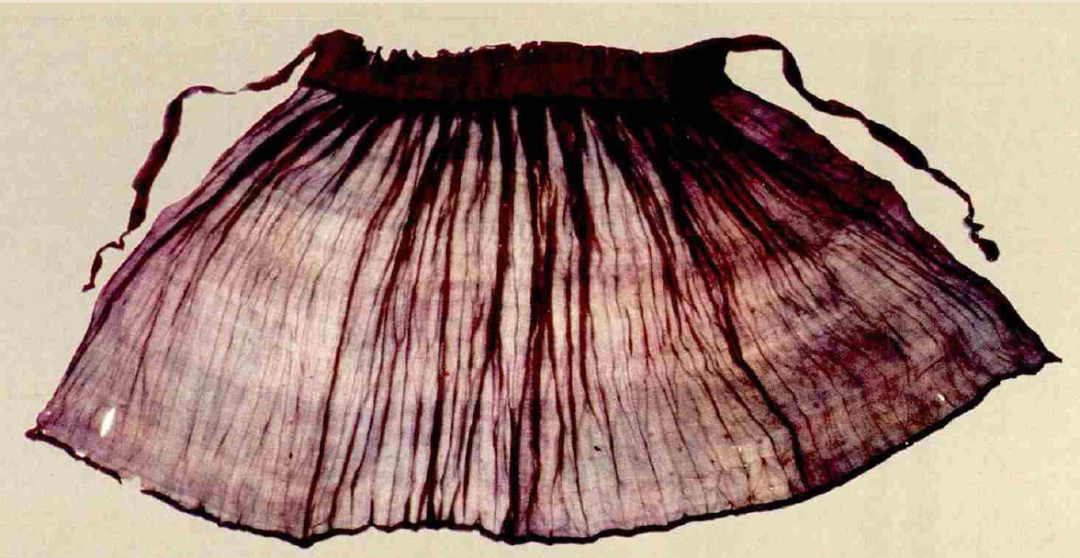
The brown brown nobel printed pleated skirt. Source/Ding Qinghua "Taking the cultural relics unearthed from the Huangsheng Tomb of the Southern Song Dynasty as the Tomb of the Southern Song Dynasty as an example: the Women's Service of the Southern Song noble women"
Girls in the Song Dynasty loved to dress up and invented many beautiful and convenient costumes, including spiral skirts. According to the Song Dynasty's "Magazine of the River", the shape of the spiral skirt was opened in front of the skirt for the use of donkeys. It was first worn by prostitutes, and the scholars and scholars were also adopted. The rotor is a skirt consisting of two skirts. Two single skirts are sutured in the waist. When wearing, stack the skirt together. The rotary skirt was first worn by the women of the Qinglou.
Later, the majority of women discovered that because of the cross -crossing, this kind of skirt was not only convenient for labor, but also convenient to ride a donkey, so she rushed to chase this fashion item first. At first, some scholars were distressedly criticized the spiral skirt and span, but they could not resist the "Law of Zhenxiang" soon. Not only did their women wear this kind of skirt, but even the literati themselves began to wear spiral skirts. In the tomb of Huang Sheng, the rich girl of the Great Song, many exquisite and gorgeous spiny skirts were buried. It can be seen how popular such a skirt is.
In the Ming Dynasty, the horse -making skirt developed from the spinning skirt formed its own unique and stable shape. For this kind of women's clothing system, "Chinese Clothing History" has described the following description: "There are folds on both sides, the skirt door and the back of the skirt with decoration, and the skirt waist and lace." Features: First of all, the skirt consists of two large skirts. The two skirts are put together and sutured to the waist. On the waist, fix it with lace, and use the skirt door to cover each other to avoid glowing. Third, in addition to the skirt on the skirt, a fine skirt will be used on both sides.
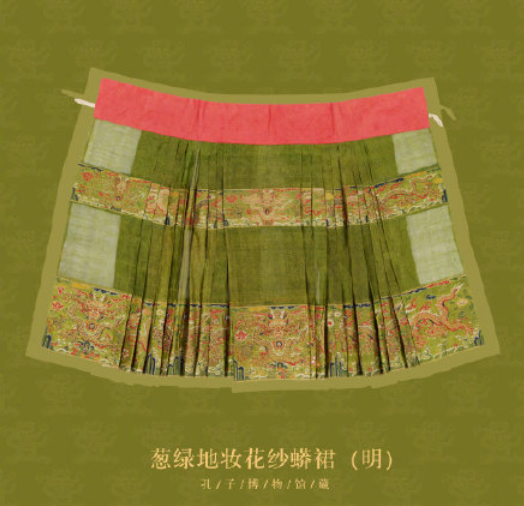
The Ming Dynasty horse -noodle skirt was paved. Source/Confucius Museum
So why is it called a "horse noodle skirt"? This starts with the four wide skirt doors. "Horse Noodle" was originally a vocabulary in the field of architecture, referring to the protruding tower -like building on the wall. The skirt door of the horse noodle skirt is very similar to those four -square horses, so it is named.
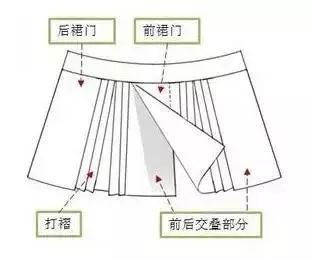
Map of the Structural Description of the Ming Dynasty Horse Skirt
"Horse Noodle" is used in clothing, which was first seen in "History of the Ming Palace". The book records: "Tie Sprom, the rear of its system is constantly, and there are two plackets on the front. It can be seen that in the Ming Dynasty, the structure of "horse noodles" was generally popular in the clothing system. Not only did women love horsepower skirts, but men's strokes could not be separated from horse folds. In other words, as a Chinese native skirt shape, horse -faced skirts are born in a specific historical period, and the general use of "horse noodles" in clothing cannot be removed.
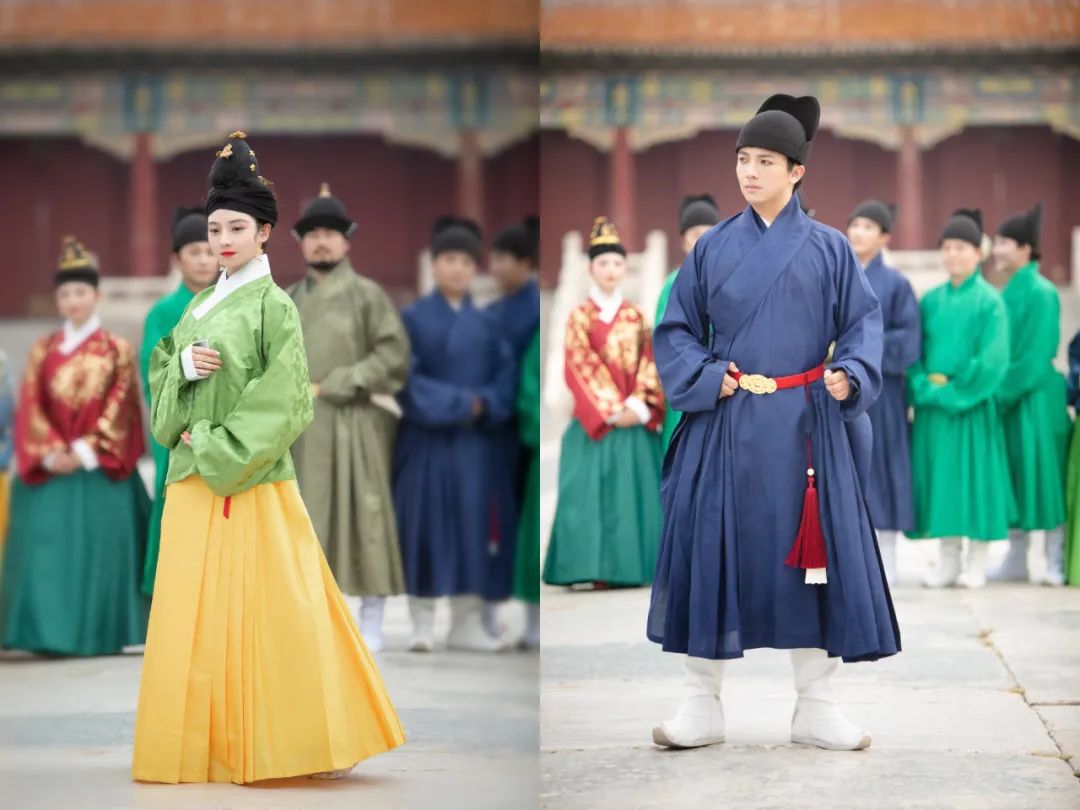
Left: Refer to the restoration of the clothing in the "Mingxianzong Lantern Festival", the woman wears a horse -faced skirt. Right: Refer to the recovery photo of the firefire in the "Ming Xuanzong Xingxing", wearing a stirring with a horsepower structure. The picture is provided by the author, photography/Wang Xiansen, appearance/Hou Jiaming, Zhou Yu
As a dress that is very favorite up to the harem and the lower to Li Min, the design of the horse -noodle skirt has been in development and change, and constantly cater to the aesthetic taste of the world. For example, in the early Ming Dynasty, horse -noodle skirts sometimes appeared in the style of a single pattern, but the pure -colored horse -free skirt without patterns was more common. In "Mingxianzong Lantern Festival", a large number of palaces are wearing solid skirts and swaying. Subsequently, the patterns on the horse's noodle skirt became more and more complicated, dazzling, and even the golden "golden" horse noodle skirt appeared. At the end of the Ming Dynasty, the elegant white horse -faced skirt became a single product sought after by women, and was loved by girls and daughter -in -law.
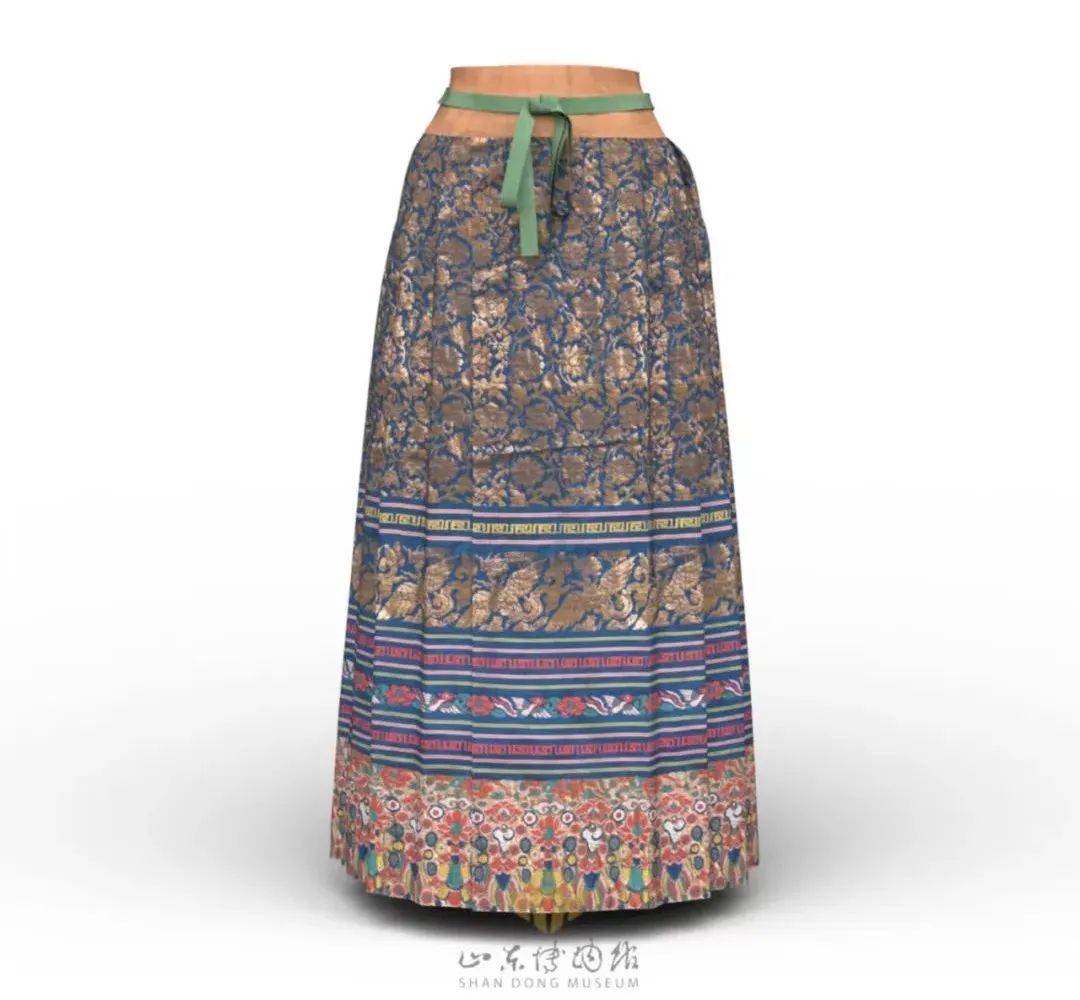
The Ming Dynasty horse -noodle skirt was wearing a schematic diagram. Source/Shandong Museum Collection
The skirt is one of the important features of the Ming Dynasty horse -noodle skirt. The so -called skirt is the horizontal decorative pattern on the skirt. In the Ming Dynasty, skirts were often made of embroidery or weaving. The skirt of the horse noodle skirt is designed on the knee or the bottom of the skirt, and woven along the skirt. Women in the Ming Dynasty liked to wear jackets and skirts. Horse -noodle skirts were usually worn with jackets. During the development of more than two hundred years in the Ming Dynasty, it showed a longer and longer trend, and the changes in the length of the jacket affected the changes in the horse -noodle skirt. For example, in the early years of Jiajing, Ming people liked to wear a jacket from length to knee, so the horsesy skirt had a wide knee on the knee, the bottom of the skirt had a narrow bottom, the skirt was shorter, and the bottom of the skirt was exposed when walking. Knee pants, don't have a taste. As the upper jacket becomes longer and longer, the length gradually covers the knees on the skirt, and the bottom of the skirt has received higher attention. In the middle and late Wanli period, the width of the bottom is more than the knee. Even some women simply give up giving up The knee was 上, leaving only one eye -catching bottom on the skirt. "Two -off dressing, three -tadpole combing hair"
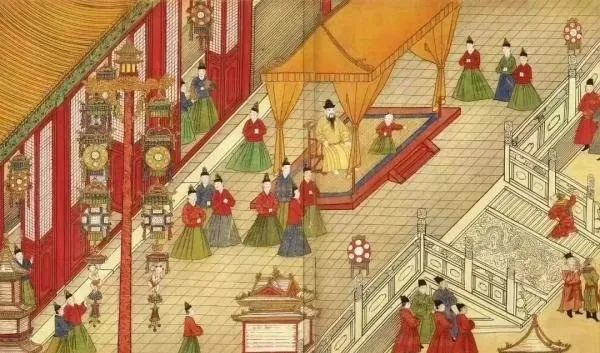
After the demise of the Ming Dynasty, the rulers of the Qing Dynasty made strict restrictions on the Han people in terms of dressing hairstyles, but after fierce struggle, they finally compromised the costumes of "men from women from women". Different from the flag of Manchu women, Han women love to wear skirts. As the saying goes, the "two -long dressing and three -bodon combing" is to refer to the Han women in the old society by dressing. Among them, the "two -cut dressing" is the method of matching the jacket and skirt. Han women can continue wearing a Chinese dress, and naturally they can also retain their beloved horse -noodle skirts.
In the early Qing Dynasty, the horse -faced skirts were probably similar to the Ming Dynasty. Until the middle of the Qing Dynasty, the horse -faced skirts had undergone major changes in decoration and shape.
The Qing Dynasty horse -noodle skirt gave up the emphasis on the skirt, and put attention on the design of the skirt door. The reason may be related to the changes in the length of the top: compared with the top of the Ming Dynasty to the ankle in the late Ming Dynasty The upper jackets of the Qing Dynasty were generally shorter, so it could expose a large area of skirt door. At the same time, after thousands of years of development, the Qing Dynasty embroidery techniques have achieved brilliant achievements. Therefore, when we see the cultural relics of the Qing Dynasty horse -faced skirts in the museum, it is difficult to be attracted by the complex embroidery ornaments on the door of the skirt.
In terms of shape, the Qing Dynasty horse -noodle skirt developed a richer style.
The phoenix horses skirt is a special horse -ranging skirt. Compared with the skirt covering the body, it is more similar to decoration wearing outside the skirt. The structure of the phoenix skirt is referenced to refer to the horse's noodle skirt and pleated skirt, and replaces the skirt folds on the side of the skirt with a color band. The phoenix skirt is arranged by the 8-12 color skirts. The skirt is sometimes different, and the pattern is embroidered to decorate. Some clever women will hang bells under the skirt, walking around with jingling, elegant and agile. Although the phoenix skirt is beautiful, it is not convenient to live, so it is replaced by other styles of skirts. "The Bamboo Ci Words of the Qing Dynasty" recorded: "How does Fengtai have been heard for a long time? Pattoo cotton is divergent, and now there are fish scales pleated skirts." Although the world is a world of view, it is convenient and convenient. Practical is more important.
Next, let's see where the sacredness replaced the beautiful phoenix skirt. The fish -scale pleated skirt mentioned above, during the Xianfeng and Shunzhi period of the Qing Dynasty, occupied a popular position in the fashion industry. To understand the style of fish -scale pleated skirts, we must first understand what "pleated skirt" is. Women in the Qing Dynasty liked to put fine folds on the side of the horse's noodle skirt. Li Dou recorded in "Yangzhou Painting Records": "Nearly the whole satin fold is used to fold it." It provides new ideas for the innovation of horse -noodle skirts. Fish scales skirts are the shape of a pleated horse noodle skirt. The clever women cross the folds on the side of the skirt with silk threads. When walking, the skirt is freely released. When the skirt opens up, the skirt is a grid -like grid -like grid, so the name of the fish scales is a fish -scale skirt.
The Qing Dynasty green tirled silk inlaid black satin long -line long -ribbon -edged fish scale fold horse noodle skirt. Source/National Clothing Museum
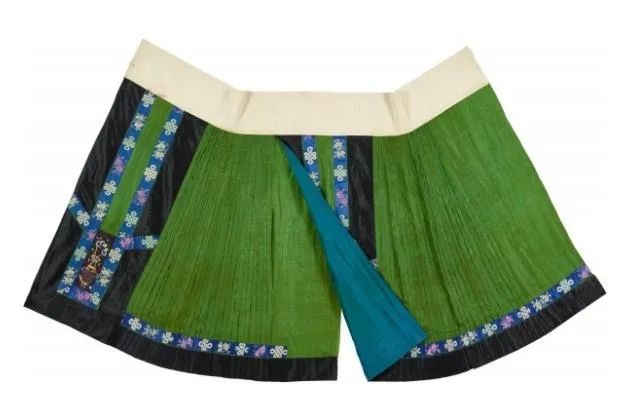
The world's preference for dressing is almost the same as taste of food. It is accustomed to eating mountains and seafood. It is inevitable that you miss green vegetables and porridge. He wears a complex and diverse pleated skirt. Compared with fish scales skirts, no folds dry skirt reflects a "low -key luxury". In the late Qing Dynasty, the dry skirts, such skirts sometimes fold, sometimes without folds, and there is no pleated dry skirt in cultural relics. The fold -free dry skirt is a kind of horse -fling skirt. It is not folded on the side of the skirt, but replaces the skirt on the side of the horsepower skirt with a number of trapezoidal cloth, and is bonded between the cloth and the skirt door.
The Qing Dynasty Han Saton Miscellaneous Treasure Flower embroidered dry skirt. Source/National Clothing Museum
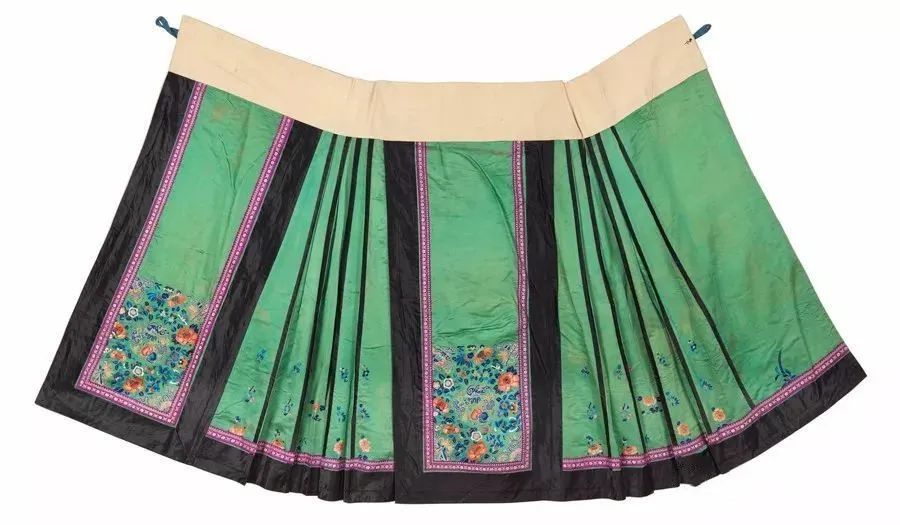
Exchanges and integration
For a period of time after the demise of the Qing Dynasty, the old dressing did not disappear. During the Republic of China, the horse -noodle skirt was still an indispensable explosive item in the beautiful women's wardrobe. And fusion with foreign Western elements, reflecting the handmade skills of Chinese women's superb innovative ability.
Women in the late Qing Dynasty in a skirt
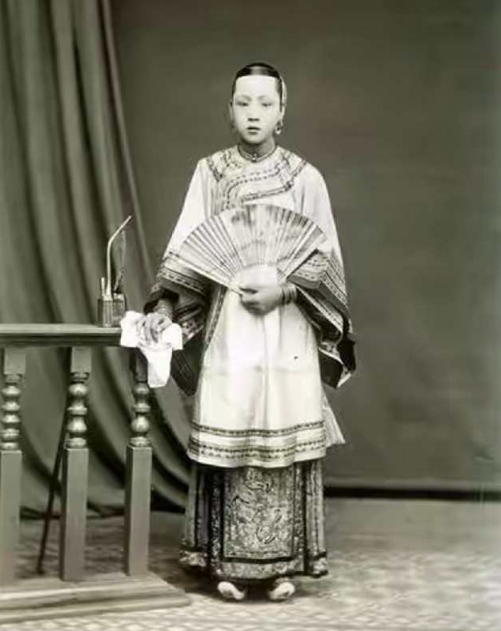
During the Republic of China, jacket skirts were still popular. Some female students with ideological progress are wearing improved jackets and running in the world of new and old flowers at that time. During this period, a large number of Western elements have been added. Some female students' skirts have adopted Western -style three -dimensional tailoring, but sometimes they will retain some elements of horse -noodle skirts to increase the beauty of the clothes.
While the Chinese boldly adopted Western -style clothing elements, Western designers also frequently marveled the exquisiteness of Chinese clothing and began to absorb Chinese clothing elements, including the shape of a horse -noodle skirt. In the "Costume" magazine in the 1950s, there were women's skirts designed with horse -noodle skirts as inspiration. In 1981, Princess Diana, the United Kingdom, also wore a horse -noodle skirt at the dinner. At that time, her coat was wearing a white shirt and a clear red embroidered horsepower skirt with her lower body, which was amazing. In 1981, Princess Diana in the UK was wearing a horse -made skirt
In 2022, Dior appeared at a uniform skirt containing horse -faced skirt elements at the autumn garment series conference held at the Chihua Women's University in Seoul, South Korea on April 30. The Dior Black Mid -long skirt, which caused a stir in a stir, is similar to the style of wearing and skirt folds, which is particularly similar to the Ming Dynasty horse -noodle skirt in my country. It can be said that Chinese clothing represented by horse -faced skirts provides important reference significance for today's world fashion design.
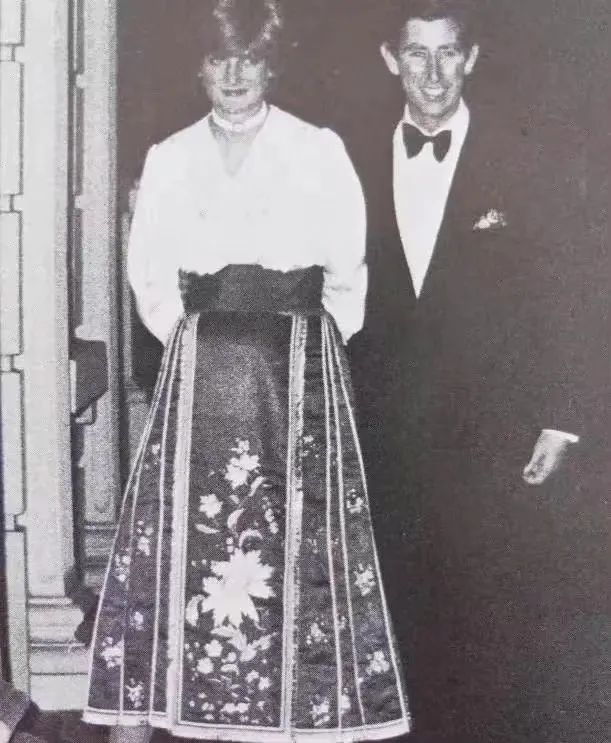
Opening the world of fashion design and even the history of art development, it is not difficult to find many cases of cultural reference. Cultural exchanges and elements are common. Other ethnic culture is of positive significance for creation.
Our historical combing of horse noodle skirts can be said to be sure that horse -noodle skirts are a Chinese skirt that was born in Chinese natives and continuously developed in the process of Chinese history. For Western designers and fashion brands, they should generously admit their inspiration sources, and should not be crowned with "iconic Dior outlines". The reference based on respect and recognition is a reference worthy of encouragement. The significance behind the clothes is far beyond the clothes itself. It is a symbolic symbol of a national history, aesthetics, culture, and craftsmanship, and also contains a nation's sincere and deep emotions for its own culture.
Source: National Humanities History
Editor -in -chief: Nala
Council: Wei Wei
Trial: Kong Ping
Recommended books
Click on the picture to enter the micro shop to buy
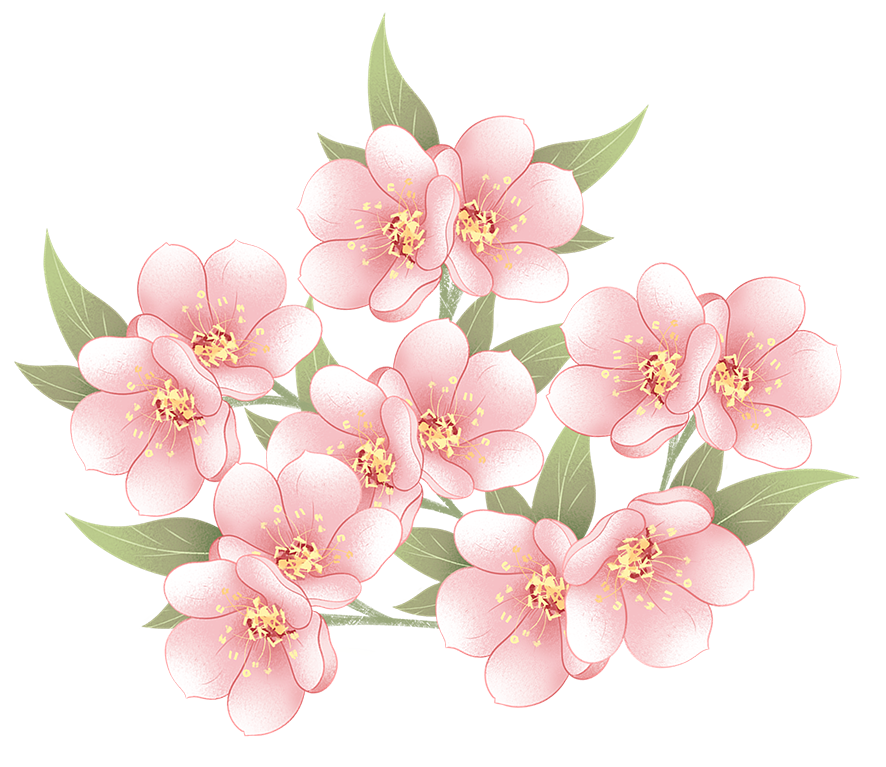
- END -
"Okay" people do bad things and bad people to do bad things. Which one is more difficult to accept?| Daily cans

The daily cans are a psychological taste and grain column of psychological taste.U...
Green Qingshui Fenghe Prairie Summer Summer Beautiful
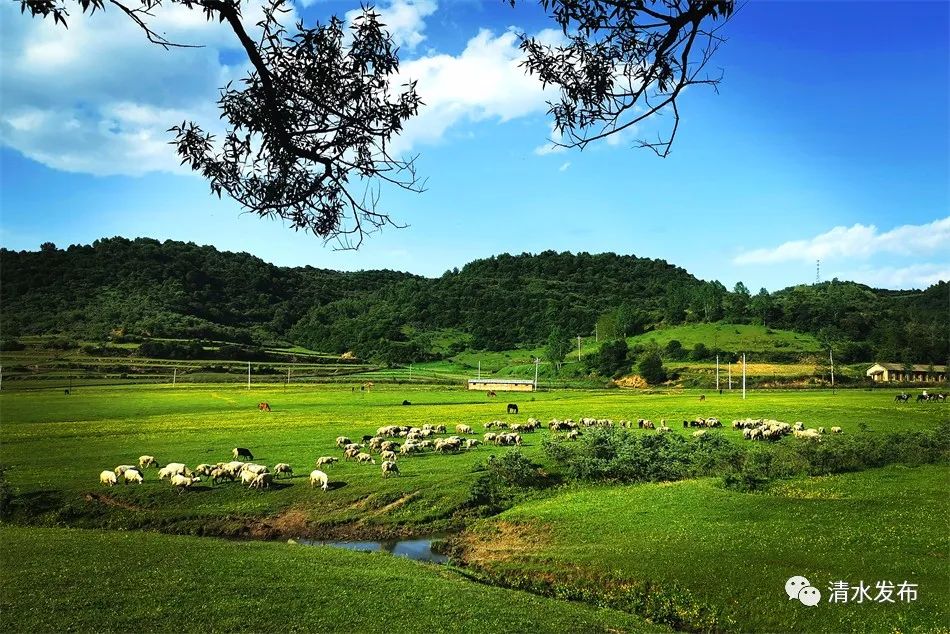
The water in the midsummer is good, and Xuanyuan's hometown is green. In June, Qin...